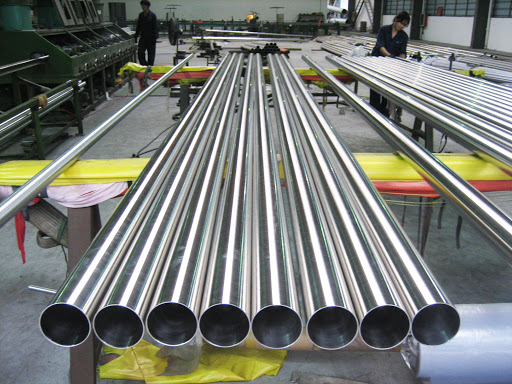The quality inspection method and steps of stainless steel seamless pipe are divided into seven steps.
1. Stainless steel seamless pipe If oil is attached to the surface of the workpiece when it is heated, the thickness of the oxide scale at the oil attachment part is different from the thickness and composition of the oxide scale at other parts, and carburization will occur. The carburized part of the base metal under the oxide skin will be severely attacked by acid. The oil droplets sprayed out by the heavy oil burner during initial combustion, if attached to the steel pipe, will have a great impact. Therefore, the operator should not directly touch the stainless steel seamless pipe fittings with his hands, and do not stain the steel pipe with new oil.
2. If there is lubricating oil attached to the surface of the workpiece during cold processing, it must be fully degreased in trichlorethylene degreasing agent and caustic soda solution, then cleaned with warm water, and then heat treated.
3. If there are impurities on the surface of the stainless steel seamless pipe, especially when organic matter or ash is attached to the workpiece, heating will certainly affect the scale.

4. Differences in the atmosphere in the stainless steel seamless tube furnace The atmosphere in the furnace is different in each part, and the formation of oxide skin will also change, which is also the reason for the unevenness after pickling. Therefore, when heating, the atmosphere in each part of the furnace must be the same.
5. Objects that are in direct contact with the heated workpiece must be fully dried before use. However, if it is placed at room temperature after drying, moisture will still condense on the surface of the workpiece under high humidity conditions. So, it is best to dry it before use.
6. There is residual oxide skin before heating. After heating, there will be differences in the thickness and composition of the oxide skin between the parts with residual oxide skin and the parts without oxide skin, which will cause uneven surface after pickling. Therefore, not only the final heat treatment should be paid attention to, but also the intermediate heat treatment and pickling should be fully paid attention to.
7. The oxide skin produced is different. Therefore, it is necessary to keep the treatment piece from directly contacting the flame port when heating.
1. Stainless steel seamless pipe If oil is attached to the surface of the workpiece when it is heated, the thickness of the oxide scale at the oil attachment part is different from the thickness and composition of the oxide scale at other parts, and carburization will occur. The carburized part of the base metal under the oxide skin will be severely attacked by acid. The oil droplets sprayed out by the heavy oil burner during initial combustion, if attached to the steel pipe, will have a great impact. Therefore, the operator should not directly touch the stainless steel seamless pipe fittings with his hands, and do not stain the steel pipe with new oil.
2. If there is lubricating oil attached to the surface of the workpiece during cold processing, it must be fully degreased in trichlorethylene degreasing agent and caustic soda solution, then cleaned with warm water, and then heat treated.
3. If there are impurities on the surface of the stainless steel seamless pipe, especially when organic matter or ash is attached to the workpiece, heating will certainly affect the scale.

4. Differences in the atmosphere in the stainless steel seamless tube furnace The atmosphere in the furnace is different in each part, and the formation of oxide skin will also change, which is also the reason for the unevenness after pickling. Therefore, when heating, the atmosphere in each part of the furnace must be the same.
5. Objects that are in direct contact with the heated workpiece must be fully dried before use. However, if it is placed at room temperature after drying, moisture will still condense on the surface of the workpiece under high humidity conditions. So, it is best to dry it before use.
6. There is residual oxide skin before heating. After heating, there will be differences in the thickness and composition of the oxide skin between the parts with residual oxide skin and the parts without oxide skin, which will cause uneven surface after pickling. Therefore, not only the final heat treatment should be paid attention to, but also the intermediate heat treatment and pickling should be fully paid attention to.
7. The oxide skin produced is different. Therefore, it is necessary to keep the treatment piece from directly contacting the flame port when heating.









